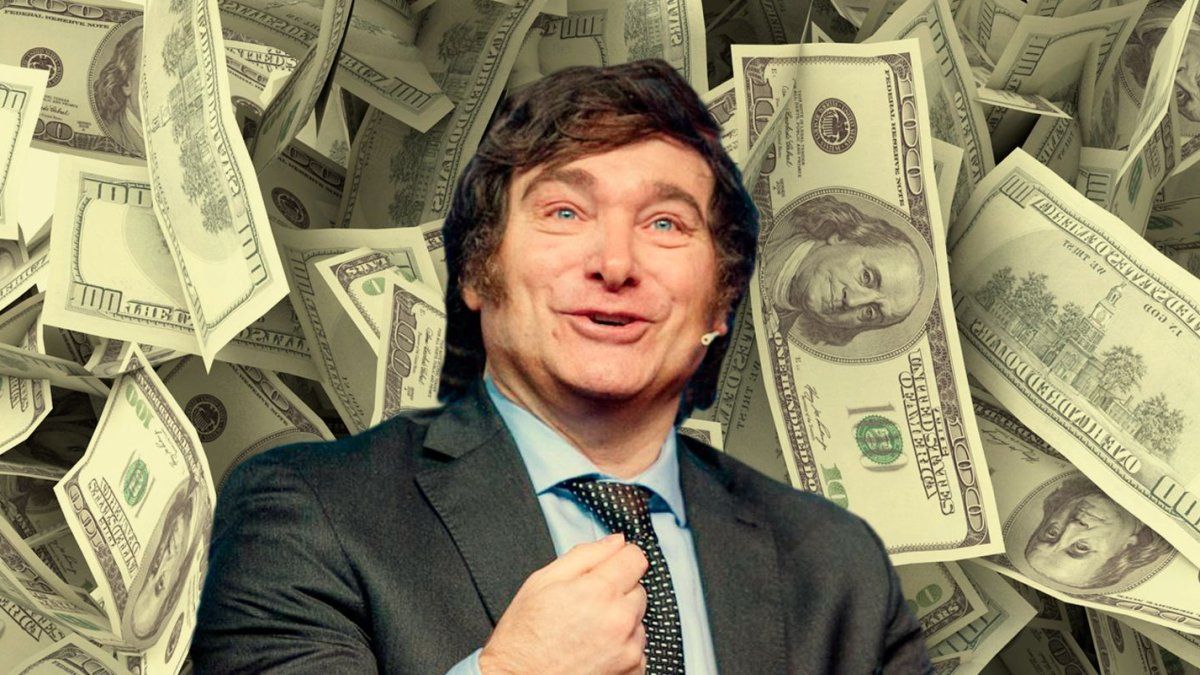dollar markets live finance investments stock markets
The dollar, axis of the economy.
Depositphotos
What can happen with rates, devaluation and the promise of Indec data
The presidential promise is that, if on Tuesday the 14th the Indec reports inflation for December 2024 in the order of 2.4% and with that figure repeats that of November, then the reduction of the crawling peg from 2% to 1% monthly would be imminent. . But a playful feint by Javier Milei & Co. could be contemplated. What if it gives 2.5%? It is not unlikely that inflation will end up showing a figure just above what was promised, and that the promise to reduce the crawl will be extended for a few months.
The ubiquitous praise of Kristalina Georgieva to the Government’s economic plan, the procedures with the staff of the International Monetary Fund (IMF) and Trumpism flooding the continent, redouble the optimism of Minister Luis Caputo.
The bank repo and the YPF bond, the Government’s “leading case”
Two pieces of financial news appear in the consideration that would seem to recreate the “optimistic” conditions predicted by the Casa Rosada. On the one hand, the REPO for US$1,000 million that the Government collected from a consortium of five international banks, in the idea that it was just “a test” that would predict other exits to the debt market at higher rates. lows.
The other, the placement of the oil company YPFwhich achieved a record amount of US$1.1 billion over ten years and a rate of 8.5% annually, with the coordination of BBVA, Deutsche Bank, Itaú BBA and Santander. Of that total, Horacio Marín, CEO of YPF, plans to allocate about US$750 million to refinance debt maturing in July and the rest will be applied to new investments.
The financial operation was followed with interest by the Government because the “YPF risk” is the country risk that the Treasury Palace wants to achieve in a few weeks. For example, discounting the rate paid by the United States Treasury bond, about 400 basis points would be clear, a figure that contrasts with the 580 points measured by the EMBI for Argentina.
Oil rises, risk of inflation, USA waits for Trump, the ages of Javier Milei
Needless to say, in recent hours, the price of oil has experienced fluctuations, rising sharply to US$81 (Brent) due to various factors, including the effects of the sanctions imposed by the president of the United States, Joe Biden, against key producing countries. These sanctions, which seek to pressure nations such as Russia and Venezuela, have impacted the global supply of crude oil, increasing uncertainty in the markets.
Geopolitical tensions and changes in global energy policy, combined with the effects of sanctions, generate price volatility. On the other hand, With the arrival of Donald Trump to the White House, the global panorama could undergo important alterations, particularly in its approach towards Russia and world energy policy. In fact, there is also speculation that there could be a recalibration of the sanctions imposed on Russia, seeking a reduction in geopolitical tensions and a reestablishment of closer diplomatic relations, which could lead to an easing of restrictions on the Russian energy sector.
Although this is a leap forward, this could result in an increase in oil supply in global markets, moderating crude oil prices in the short term.
However, the situation in Ukraine and international pressure on Russia would remain determining factors, and it is uncertain whether Trump could actually implement his more conciliatory approach without facing strong internal and external opposition. Additionally, Trump’s energy policy could also, as is speculated, focus on strengthening domestic oil and gas production, which could reduce the United States’ dependence on international markets and further alter supply and demand dynamics. .
Although it is still early to predict with certainty, Trump’s arrival could generate a phase of uncertainty in the energy markets, given that his policies could be less predictable and marked by quick and unpredictable decisions.
Record oil and gas production, more dollars and the horsemen of the energy apocalypse
In any case, oil production in Argentina during 2024 marked record levels in the last 20 years, a movement that seems to accelerate. Strictly speaking, the trade balance of the energy sector reached a surplus of US$5,000 million due to the sharp drop in imports of natural gas and an increase in production located above 750 thousand barrels per day of crude oil at national level.
In this sense, YPF is the oil company that produces the most crude oil (360 thousand barrels per day), then Pan American Energy (PAE), with 110 thousand barrels; Vista Energy, with 70 thousand; Pluspetrol, with 45 thousand; and Shell, with more than 30 thousand barrels per day. They are followed by CGC Energía, Tecpetrol, Chevron Argentina, Compañías Asociadas Petroleras, Kilwer, Capex, Total Austral, Petrochemical Comodoro Rivadavia, Petrolera Aconcagua Energía, Pecom Servicios Energía and Exxonmobil, among others.
On the other hand, and according to the report from the consulting firm Oil Production, gas production as of November showed figures with good performance. Total Austral added 31,333 m3-day, followed by YPF, Pan American Energy, Tecpetrol and Pampa Energía, the latter with 8.7% of the country’s total. They were followed by Pluspetrol, Compañía General de Combustibles, CGC Enería, Capex, Enap and Vista Energy, among others.
Energy balance and the fight over the reserves of the BCRA, Quantum and Antuara
Despite the balance that could be left in the energy balance, the fight is now to strengthen the BCRA’s reserves. Although in 2024 the BCRA purchased about US$22 billion, it had to allocate a significant part of that to interventions and payments, which led to an accumulation of just less than half.
According to the consulting firm Quantum (Daniel Marx), the stock of gross reserves went from US$21,209 million to US$30,904 million while the net liquid reserves went from being negative at US$11,708 million in December 2023 to negative in US$ s4,335 million on January 9, 2025.
In its report this week, the Antuara consulting firm directed by Gabriel Berutti maintains that after the Government made the payment of capital and interest of the Bonares and Globales last week, the dollar bonds were quoted with decreases starting Wednesday, after several weeks of increases in which restructured sovereigns recorded historical maximum prices. Their prices without coupons cut the increases in the face of a much more severe international context for all fixed income. But above all, it emphasizes that the drop in country risk of 8% to 562 basis points was due to the increase in rates of North American Treasuries.
On the other hand, from Antuara they see that the Government will seek some US$11,000 million this year in a new agreement with the IMF, although it could also venture into the international debt market to reinforce this strategy. This could activate a “survival” to the “blend” dollar, whose objective is to give exporters 20% of the cash settlement with settlement, adding supply in that market. In short, both for Quantum and Antuara, the Government’s strategy for the election year is that of a practically anchored dollar.
Source: Ambito
I am an author and journalist who has worked in the entertainment industry for over a decade. I currently work as a news editor at a major news website, and my focus is on covering the latest trends in entertainment. I also write occasional pieces for other outlets, and have authored two books about the entertainment industry.




